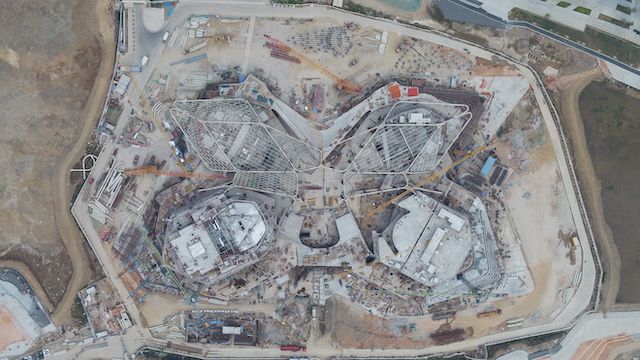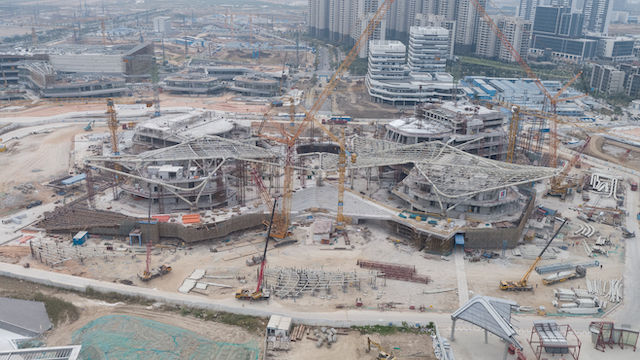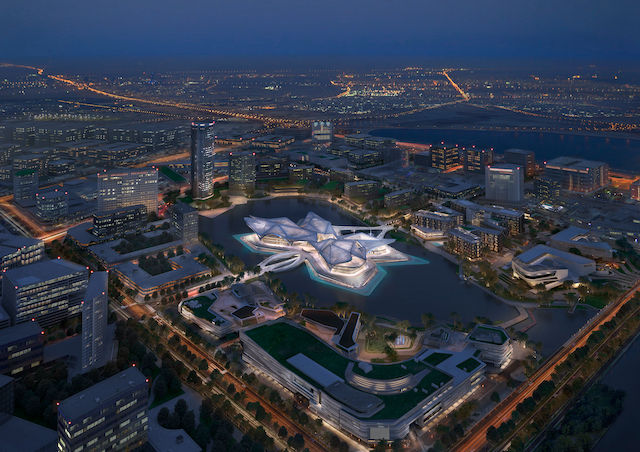Situated in the Jinwan district’s western Ecological new town– the Zhuhai Jinwan Civic Art Centre is under construction by Zaha Hadid Architects. The centre seeks to combine four distinct cultural institutions that include a 1200-seat Grand Theatre; a 500-seat Multifunctional Hall, a Science Centre; and an Art Museum. The distinctive venues are amalgamated through the design of a coherent structure spanning 170m wide (from east to west) and 270m long (from north to south).
The centre is highly accessible by Zhuhai’s city centre, its airport and Hengqin district, along with Guangzhou, Shenzhen, Macau and Hong Kong due to the direct connections and interchanges facilitated by the new Zhuhai Airport Intercity Railway. Inspired and embraced by the patterns of migratory birds, the latticed steel canopies over each venue are configured through repetition, symmetry and scale variation; resulting in a responsive composition of similar elements. The self-supporting and self-stabilising roof structure becomes a highly distinctive feature as it links multiple spaces under a network of reticulated shells. The repetition of the modules also optimises pre-fabrication, pre-assembly and the use of modular construction.
The symmetric arrangement of the two large and small venues are further connected by a central plaza that serves as a shared external foyer to each of the four cultural institutions. The materiality of The Grand Theatre and Art Museum are very light in comparison to the Multifunctional Hall and Science Centre consisting of a darker material palette.
To enrich and engage the Zhuhai residents, the design is intentionally optimised to allow the entry of natural light in all public areas to enhance connectivity and intimacy. Ramps invite visitors to the rooftop piazza where footbridges and stairs connect through a central void to each venue. The centre’s landscaping and surrounding lake are designed in close connection with the Zhuhai’s ‘sponge city’ initiative that targets the natural permeation, storage and re-use of at least 70% of the city’s rainwater; using aquatic flora and fauna to naturally filter contaminants.
Designed to achieve two stars within China’s Green Building Evaluation Standard, energy consumption and indoor air quality monitoring systems are matched to automatically control the indoor environmental comforts. Adding to this, the waste heat recovery will be used to meet the centre’s hot water demand with water-saving appliances connected to the centre’s water recycling system.
(Text by Nikitha Sunil, Contributor at A+D)






